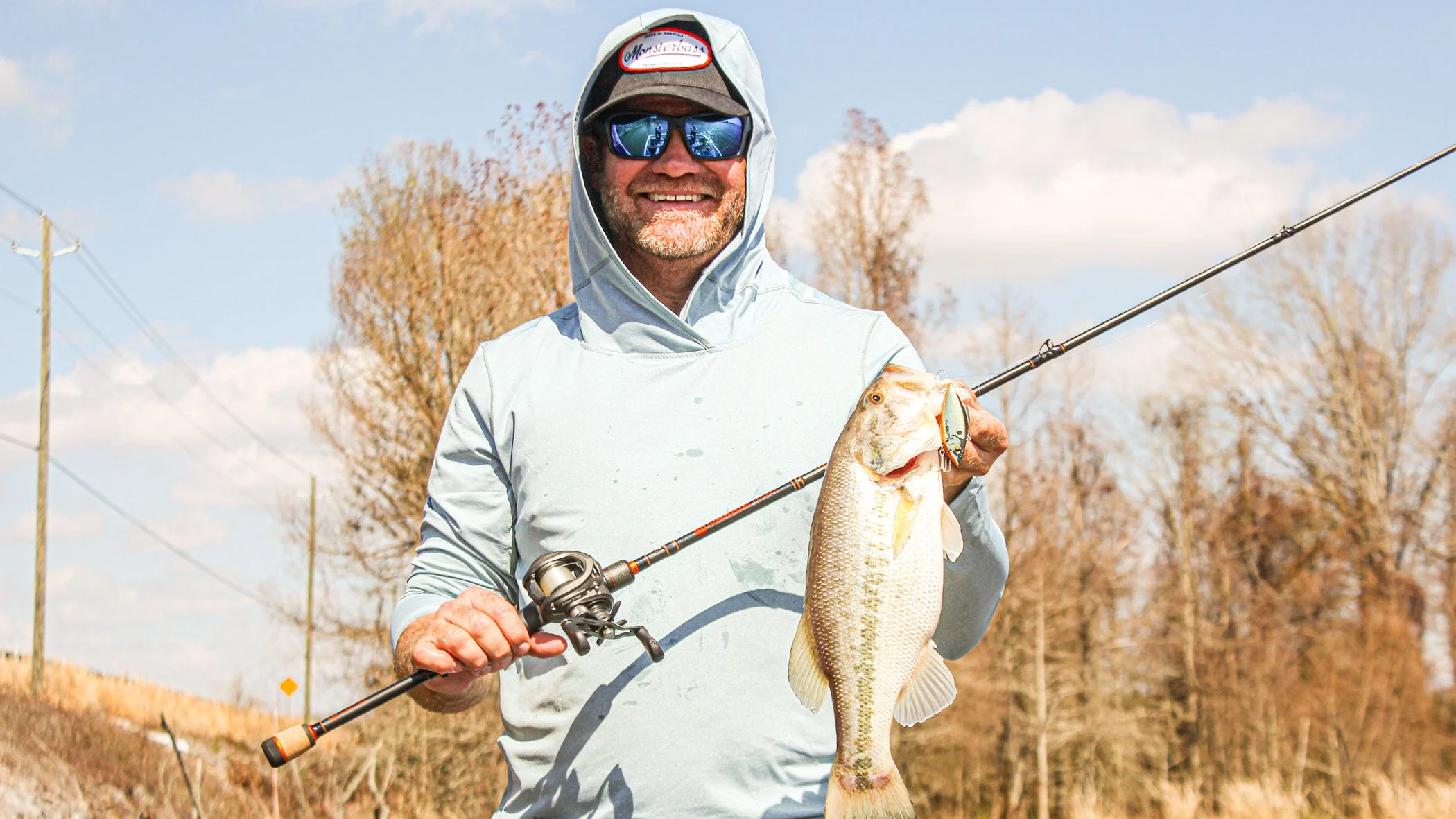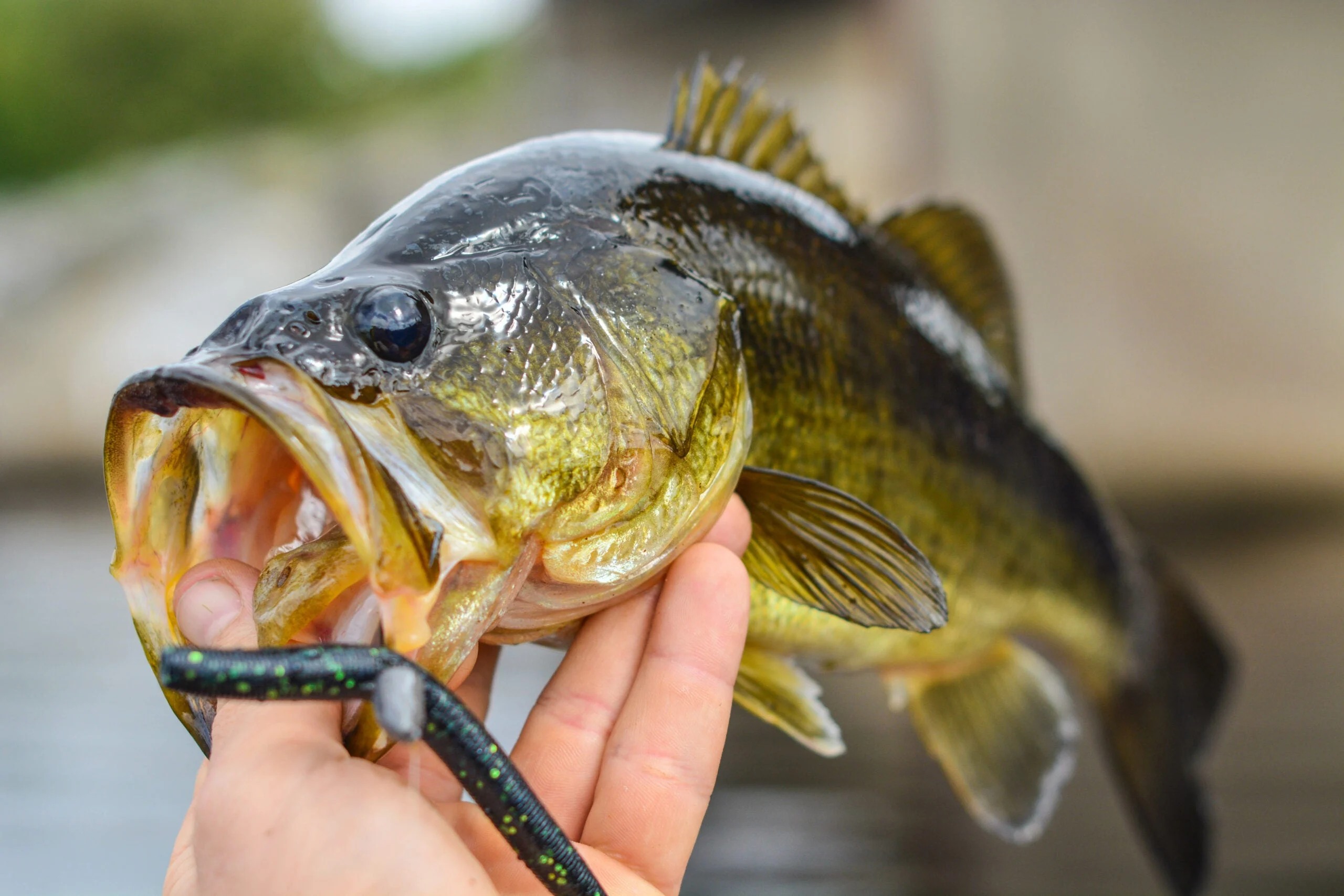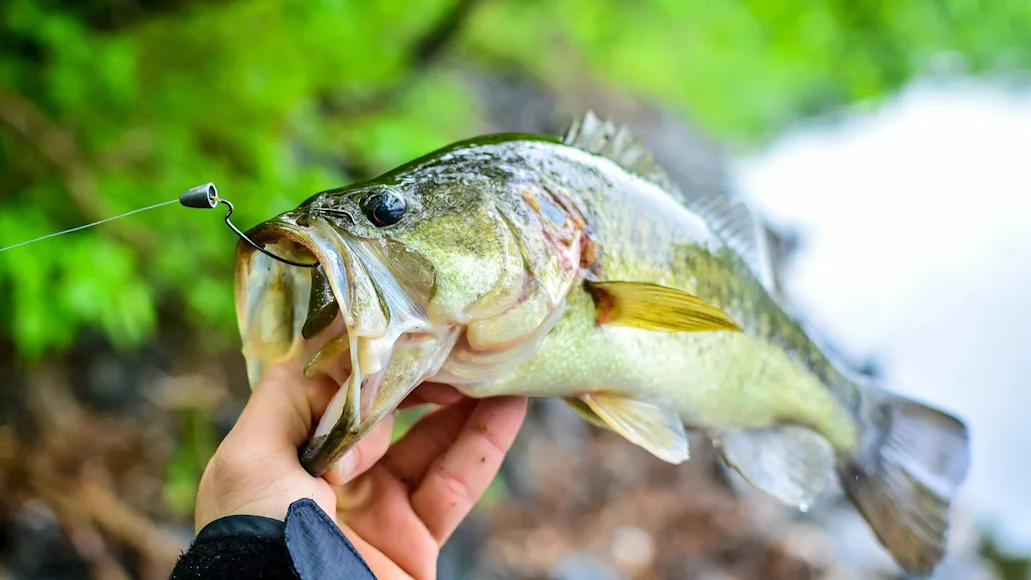The spring is one of the best times to target bass across the country. Though there are certainly pockets of exciting fishing elsewhere on the calendar, the spring is when bass push shallow and become accessible to all anglers. It doesn’t matter if you fish from the bank
, a kayak
, or a bass boat
—in the spring, bass are reachable and willing to bite. With a few bass fishing tips, you can elevate your spring fishing from good to excellent.
Bass move in shallow during springtime to reproduce and make their way through all three stages of the spawn
: pre-spawn, spawn, and post-spawn. Though bass are relatively shallow throughout these three sub-seasons, the bass behave differently and position themselves in different areas depending on what phase of the spawn they’re in.
This directly affects feeding behaviors and, in turn, impacts fishing tactics and strategy. That’s why it’s important to have a playbook for all three stages of the spawn in case a specific bait or technique suddenly goes cold. I put together these 12 bass fishing tips—four for each stage of the spawn—to help you be successful this spring.

The author with a healthy largemouth caught on a moving bait. Shaye Baker
Bass Fishing Tips: Pre-Spawn
The pre-spawn refers to the short window of time right before bass move onto beds to spawn. This is typically when fish will weigh the most, as the females are loaded with eggs and are feeding heavily. This is also a great time to get out on the water and go after monster bass. Here are four bass fishing tips for this time of year.
1. Target Staging Fish
Though some bass stay shallow year-round, the majority move to deeper water in the winter in pursuit of food. These fish move back shallow as winter turns to spring, again following the bait but also getting into position to move into their spawning grounds.
Look for areas with deep water in close proximity to shallow water, and you’re bound to find schools of pre-spawn bass. A good example is a creek channel bend, where the channel swings up next to the bank. You can also find fish along 45-degree banks leading back into pockets and on primary and secondary points in these pockets and creeks.
2. Fish the Bottom Half of the Water Column
Though a few bass can be caught near the surface in the early spring, most of the staging bass in these pre-spawn areas will be in the lower half of the water column. This means jerkbaits will still work, but jigs and medium-diving crankbaits fished along the bottom will produce the best results.
Jigs and crankbaits are usually used to mimic crawfish, a favorite springtime food source in many bass fisheries. Use primarily brown, green, and black jigs with orange, chartreuse, or red skirts. Dipping the tips of your jig trailers in one of these bright colors works well, too. Red is a great color selection for crankbaits since they can often mimic crawfish in both color and action.
For jerkbaits, shad patterns are your best bet. Other baitfish imitators like Damiki rigs, small swimbaits
, and underspins also work well when trying to imitate shad, smelt, and herring in the lower half of the water column.
3. Fish Fast
Bass are cold-blooded, meaning their body temperatures and metabolisms are regulated by the water temps around them. Cold water temperatures make for lethargic bass in the winter, but as water temps rise in the spring, bass become much more aggressive. Anglers should use baits like lipless crankbaits
, and vibrating jigs to get aggressive strikes from hungry bass as they begin to push into shallower water.
4. Look for Cover
Bass feed heavily during the pre-spawn as they bulk up for the grueling bedding process ahead. These predatory fish like to use stumps, submerged vegetation, and laydowns as cover to ambush prey. Look for areas with cover present, then visualize a bass positioned nearby. It’s important to cast your baits right alongside or even in cover this time of year. It’s okay if you find yourself hanging up sometimes. If you’re not getting hung every now and then, you’re probably not throwing where the fish are. Throw your baits at these pieces of cover and hold on tight. A bite is bound to come if you do this enough.
Learn how to subscribe to the new Field & Stream magazine here!
How To Fish the Spawn
The spawn simply means that the bass are actively on beds. Bass make their beds by fanning their tales back and forth to clean debris off the bottom. The female will then deposit her eggs onto the bed, and the male will fertilize them, both fish typically staying nearby until the eggs hatch. This bedding process can transpire in a few hours or last for multiple days, with the overall spawn stretching on for a few weeks on any given fishery. Here are four bass fishing tips for the spawn.
1. Start With a Search Bait
Keeping a search bait in your hand will help you rule out unproductive water when searching for bass on beds. Buzzbaits, frogs
, and swim jigs are great tools for this job, as they allow you to cover water quickly while drawing strikes from aggressive fish. Pick your search bait based on the type of cover in the area. Lipless crankbaits and vibrating jigs are great for submerged vegetation like hydrilla, milfoil, and coontail. While swim jigs work better in emergent vegetation like water willow. Swimbaits and buzzbaits are great for bare banks and isolated cover, while hollow-body frogs are perhaps the best baits to skip under docks and bushes.
2. Slow Down
Once you start to get a few bites or see fish, you’ll want to slow down. Typically, there will be multiple bass spawning in an area, whether that’s a lake pocket or a pond. When the conditions are right, many bass will spawn simultaneously. To make the most of this presumed concentration of bass, slow down and transition to either a Texas rig, floating worm, or wacky rig to milk the area for all it’s worth.
Keep your head on a swivel, looking for visual indicators like white spots beneath the surface or isolated cover above the water. Gently present your bait to these areas and work it slowly, envisioning a bass inspecting your bait on every cast, even if you can’t actually make out what’s going on beneath the surface.
3. Back Off the Beds
Competitive anglers have found that it is more productive to back off and “blind cast” to beds, waiting for their line to start swimming off before setting the hook. This helps determine if the bass has eaten the bait or not. Fish tend to eat the bait better when they’re not being stared at by a fisherman from just a few yards away.
4. Clear Things Up
With the spring comes the spawn, along with the pollen. This yellow dust covers the water’s surface on many fisheries at the same exact time the bass move to the beds. Even a thin layer of pollen can make it impossible to see what’s going on beneath the surface, no matter how clear the actual water is. Using a water gun or pump-up sprayer filled with water, you can move the pollen right out of the way. Just spray in the direction where you believe a bass to be bedding, and when the water hits the lake’s surface, it pushes the pollen out of the way and makes it much easier to see what’s going on beneath.

Fishing a senko is a good way to slow down your technique once you find fish in the spawn. Stock fresh/Adobe Stock
Bass Fishing Tips: Post-Spawn
The post-spawn refers to the roughly month-long period immediately following the spawn. During this timeframe, bass will leave their beds in search of food and somewhere to recuperate from the grueling bedding process and rising water temperatures. The good news is that food is plentiful with insect hatches and baitfish spawns in full swing. And there are multiple ways for them to escape the heat, in shallow shady areas or nearby deeper water.
1. Fish Topwater Baits
The early post-spawn transition is one of the better times of the year to throw a topwater bait. Frogs and toads work extremely well under bushes and in vegetation. Buzzbaits and whopper ploppers are great along bare banks and around docks. Spooks and poppers produce big blow-ups around isolated cover. Pick your favorite topwater, go shallow, and you’re bound to get bit during the early post-spawn phase.
2. Target Aggressive Post-Spawn Females
You’ll see a pretty peculiar behavior play out during the immediate post-spawn, in which male bass stick around to protect the newly hatched fry from predators like bream, bluegill, and other bass—including their own mothers. In an interesting and perplexing turn of natural events, the large female bass that were protecting their eggs with their lives just hours before can turn cannibalistic and begin feeding on their very own hatchlings.
Though it’s easier to catch the defensive males than it is the skittish females, it’s best to leave the buck bass alone to guard the fry and instead try your hand at catching the big girl that’s usually lurking nearby. A wacky rig lands at the top of the list of baits best suited for this task.
3. Look for Bait Spawns and Insect Hatches
As the bass spawn wraps up, numerous shallow food sources become plentiful for the weary and worn-out bass coming off the beds. Baitfish like shad and blueback herring begin to spawn by the thousands along shallow shoreline cover like docks and grass lines and on shallow rocky humps out in otherwise open water. These bait spawns create buffets for hungry bass.
A little later on, bream and bluegill also begin to spawn along shallow banks and in the backs of flat pockets. Then come the mayfly and cicada hatches, when droves of insects suddenly appear in areas and create additional feeding opportunities for bass. In all of these baitfish spawn scenarios, pick lures that closely match the particular hatch. For the insect hatches, however, choose your lures based on the baitfish that are eating the insects.
4. Begin to Move Offshore
Though these food sources will keep many bass shallow throughout the summer, many spawners will begin to move offshore to seek refuge in cooler, deeper water. This is when you’ll want to target the first pieces of offshore cover you can find, like brush piles and stumps in 10 to 15 feet of water. Use crankbaits, hair jigs, and large Texas rigged worms for casting to these pieces of cover. If the bass are pressured and reluctant to bite, pitch a dropshot or Neko rig for a more vertical presentation. By the end of the post-spawn, it will be time to start shifting to summer fishing strategies, many of which center around fishing deeper water.






